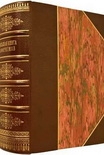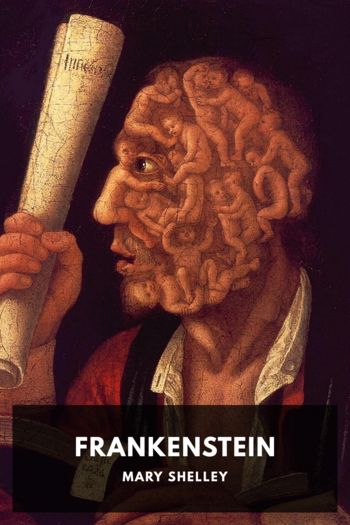Billy Wilder on Assignment, Noah Isenberg [the beginning after the end read novel .TXT] 📗

- Author: Noah Isenberg
Book online «Billy Wilder on Assignment, Noah Isenberg [the beginning after the end read novel .TXT] 📗». Author Noah Isenberg
As every child knows, the coffeehouse is a specifically Viennese affair. And now Vienna has gotten its most beautiful café. Located at the corner of Schwarzenbergplatz and Parkring, it had its opening yesterday, and its name is Promenaden-Café. Even the most pampered visitor is impressed. The elegant red hall with the charming corner arrangements, the green and the blue salon, the dining room, the appetizing food, the waiters in finest tails, all that attests to charm and good taste. And the specialty coffee! Praise be to the cook, praise to her heartwarming approach: half a cup of whipped cream swims over that wonderfully fragrant specialty coffee, the Weisse (you don’t know when to settle down and rejoice—each tastes better than the one before). The pastry, the newspaper, cigarettes all appear quick as lightning, materializing on the marble table as if by magic. How comfortable, how patriarchal you feel in those velvet armchairs! The window, adorned with flowers, offers a splendid view onto the Ring, with the aroma of Turkish coffee under your nose.… No, you have to get to know this feeling for yourself! Go there and judge. I have found my favorite café.
Die Stunde, September 17, 1925
That’s Some Cold Weather—in Venice!
Venice, late February.—The airplane passenger escaping the winter over the Alps sets the heat down to the halfway mark at Udine, presses his cheek against the window, closes his eyes partway, and lets the full sun shine on his nose; he stretches out his arms and legs until his joints crack, spreads out as if under a warm quilt, and stays hushed in sweet sultriness until the Italian pilot notifies him that the sky-blue thing on the left is the Adriatic Sea, and the river down below is the Piave.
From the landing place, S. Niccolò di Lido, a motorboat brings him to Venice. He sees the Canal di S. Marco, which is as smooth as a billiards table and as clear as the eyes of the Madonna del Mascoli. He slips off his glove and sticks his finger into the water, for just a second, then pulls it out again, blue with cold. But he is delighted about the South that surrounds him, devotedly lays his traveling cap on his lap, and thinks he sees the Ponte della Paglia and the Campanile over there.
Upstairs, in his hotel room, he happily opens the window and breathes in the spring. Then he takes light flannel trousers out of his suitcase, white shoes with yellow toe caps and a violet shirt, and he deeply regrets having left his straw hat at home. He walks across the Riva degli Schiavoni, bareheaded, buoyant, and revitalized. He stumbles across scuffling young rascals, orange peels fly out of laundry-laden windows onto his head; he doesn’t notice any of it. A cold wind from the Isola di S. Giorgio Maggiore makes him shiver, he puts only his right hand into his trousers pocket—his left hand points to Venice and the surrounding areas—while whistling Puccini and picturing himself on the equator. Doesn’t see black clouds looming up. Doesn’t hear the raindrops splashing onto the pavement of the piazza. He walks across it to the Lavena confectionery. Orders gelato and a dozen postcards. Spoons some ice cream and writes to his family. I’m in Arcadia, too. And: here there’s sun and paradise. And: see Venice and die. And: I swim in the nice warm Adriatic every day.
He looks out onto the grand Corso in front of the old Procuratie and joins the people there; detects something of a change in the temperature, sneezes three times, goes back to the Albergo, gets his coat and hat and praises the travel guide, where he reads, on page 12, “When the sun goes down in the late afternoon in the winter months, there is a sudden, very noticeable cooling down, on an average of at least six to ten degrees, which is disconcerting to people from the North. The best months for a trip to Venice are April to May and September to November. But the winter is also mild because of the sea and the lagoons.”
The traveler buttons up his coat as far as he can and goes to supper, through wonderfully winding little streets so narrow that a good bit of mortar sticks to his elbows, over bridges with slippery steps. He eats at a tavern near the opera: gamberetti, pea soup with parmesan. Tangerines, heavy wine from Verona, eight lire a quart, and an espresso with confectioners’ sugar. He wants to go dancing and asks the waiter where: Niente, he says.
The next morning, the man opens the window shutters out to the side and doesn’t see three yards ahead of him. London fog lies all over Venice. It is also raining, and snowing with watery flakes. The mercury is a couple of lines below zero. He turns up his coat collar and walks to the Canal Grande. At the Piazzetta there are a good twenty gondolas. No dogs anywhere. Only a rampino with a rusty grappling hook and a wet nose with drop after drop trickling out of it, on and on. For thirty centesimi this fellow will do a run to the Osteria where the gondoliers drink grappa, white grain.
They ride along the Canal Grande, toward the Rialto Bridge: the gondolier, who sends a wide arc of spittle hurtling toward a vaporetto, and the passenger, leafing through his travel guide with chattering teeth. He reads, “On the left, the Santa Maria della Salute church, dedicated to the rescuer from the great plague. 1030. Baroque.” He glances over: nothing. He adjusts his binoculars: nothing. The fog is so thick that he could cut it with a knife. He goes on to read, “On the right, Palazzo Contarini, magnificent Early Renaissance construction (1504), with half-figures over the portals.”
But he doesn’t see the palazzo, nor does he see the Early Renaissance or the portals or the half-figures. Only the gondolier, who wipes his





Comments (0)